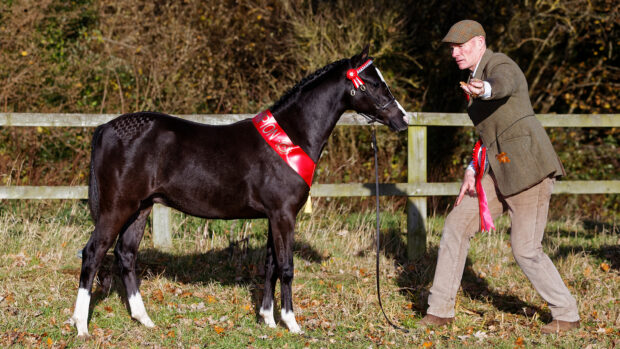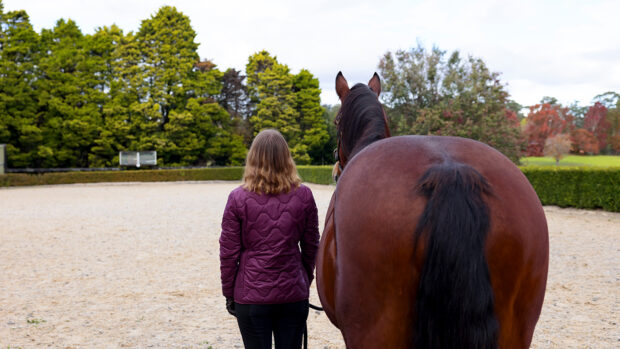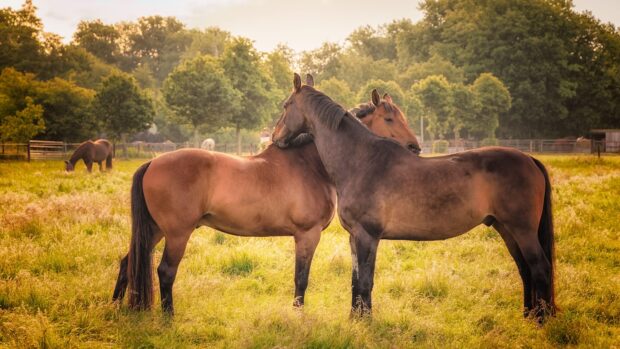Q. A couple of months ago I bought a seven-year-old 15hh part-Thoroughbred mare for general work – hacking, schooling, a little jumping and the odd summer show. She is perfect in every way and we’ve had a lot of fun togther in the short time I’ve owned her.
The only problem is, she is virtually impossible to catch. She goes out for about six hours a day with her Shetland companion and then I bring both of them in at night.
I catch my Shetland first and then go back for her. I have tried carrying a bucket of feed and getting friends to help me but it still takes, on average, up to an hour to catch her. It seems like she is laughing at me.
I’m not sure whether she did this with her previous owners. Could it be that I’m doing something wrong?
A. To start with, make sure your horse is in good health and that she’s in no pain or discomfort which may cause her to be difficult to catch.
Partition off the field and turn your two horses out in a smaller area, giving your mare less room to run away. The easiest way to do this is to use electric fencing. This means you can move thesmaller paddock around the field so it doesn’t poach.
Then try one (or all) of the following methods to re-educate your horse into being caught.
Remember that every horse is an individual, so what will work with one horse may not necessarily work with another.
Probably the only time we go into our horse’s field is to fetch him in to ride, groom or do something else with him.
So what we have to do is change the expectation of our horse when he sees us come into the field. Settime aside to re-school your horse. Look on it the same way as riding lessons – they’re important and you need to make time for them.
Walk into the smaller paddock and straight back out again. Do this several times. Do not touch your horseseven if they come up to you. Then, walk in and drop pieces of apple or carrot on the ground and walk out.
If you do this often enough your horses may be inquisitive enough to approach you – but still do not touch them.
This is changing their expectation of seeing you enter their field. Then, when you have time to spare, take a book, a bucket and some carrots and apples. Drop the apples on the ground as usual then turn the bucket upside down, sit on it and start reading your book.
Remember, you are changing habits and you have to change the horse’s perception about what he thinks is going to happen. Keep him guessing!
So, let the horses approach you and totally ignore them. You should find that, before long, curiosity will get the better of them and they will come up to have a look at what you’re doing. The first few times this happens, do not touch the horses.
Then, slowly stroke the horses once before taking your hand away. As time passes you’ll be able to do this more. In time this will build up the relationship and confidence with you and your horses.



